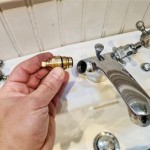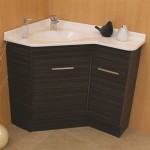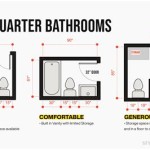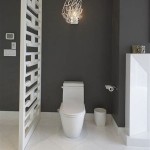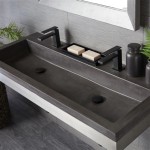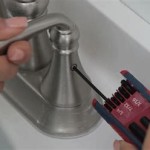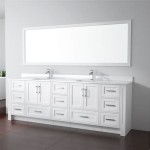How to Change Out Your Bathroom Vanity Light: A Comprehensive Guide
Upgrading the bathroom vanity light can dramatically improve the ambiance and functionality of a bathroom. A new light fixture can modernize the space, provide better illumination for grooming, and even increase the overall value of the home. While it may seem daunting, replacing a bathroom vanity light is a relatively straightforward project that most homeowners can complete with the right tools, preparation, and understanding of basic electrical principles.
This guide provides a step-by-step approach to safely and effectively change out a bathroom vanity light. It covers everything from initial safety precautions to the final installation and testing of the new fixture. By following these instructions carefully, individuals can confidently enhance their bathroom's aesthetics and functionality.
Preparation and Safety Precautions
Before embarking on any electrical project, safety must be the top priority. Electricity is dangerous, and improper handling can lead to serious injury or even death. Therefore, a few essential precautions are paramount.
First and foremost, turn off the power to the bathroom vanity light at the circuit breaker. Locate the breaker that controls the bathroom circuit and switch it to the "off" position. To ensure the power is completely disconnected, use a non-contact voltage tester to confirm that no electricity is flowing to the existing light fixture. This device, when held near the wires, will indicate the presence of voltage through an audible or visual signal. Testing is crucial, even if the breaker is turned off, as wiring errors or mislabeled breakers are not uncommon.
Gather all the necessary tools and materials before starting the removal process. This preparation will minimize interruptions and ensure a smooth and efficient workflow. Essential tools include a screwdriver set (both flathead and Phillips head), wire strippers, wire connectors (wire nuts), electrical tape, a utility knife, a non-contact voltage tester, safety glasses, and work gloves. A ladder may also be necessary depending on the height of the existing fixture.
Having a clear workspace is also essential. Remove any clutter from around the vanity area to prevent tripping hazards and to provide ample room to maneuver. Cover the countertop with a drop cloth or old towel to protect it from scratches or falling debris during the removal and installation process.
Finally, read the instructions provided with the new light fixture thoroughly. Each fixture may have specific installation requirements or recommendations that differ from other models. Understanding the manufacturer's instructions beforehand can prevent errors and ensure the fixture is installed correctly.
Removing the Old Light Fixture
With the power safely disconnected and the workspace prepared, the next step is to remove the existing light fixture. This process typically involves several steps, starting with removing the light bulbs. Carefully unscrew and remove all the light bulbs from the fixture. It is advisable to place them in a safe location to prevent breakage.
Next, locate and remove any glass shades or decorative elements that are attached to the fixture. These components are usually held in place by screws, clips, or retaining rings. Unscrew or detach these elements carefully and set them aside. Note the order in which they were removed, as this will be helpful during the reinstallation process if any of the old components are to be reused.
The next step involves disconnecting the fixture from the electrical box. Most vanity lights are attached to a mounting bracket or plate that is screwed into the electrical box in the wall. Use a screwdriver to remove the screws that secure the fixture to this bracket. Once the screws are removed, gently pull the fixture away from the wall, exposing the electrical wires. Be cautious when pulling the fixture away from the wall, as the wires may be tightly connected and pulling too hard could damage them or the connections.
Before disconnecting any wires, carefully examine how the existing fixture is wired. Typically, there will be three wires: a black wire (hot), a white wire (neutral), and a green or bare copper wire (ground). The black wire provides the electricity, the white wire completes the circuit, and the ground wire provides a safe path for electricity in case of a fault. Taking a photo or making a sketch of the wiring configuration can be helpful as a reference during the installation of the new fixture. This prevents confusion and ensures proper wiring of the new fixture.
Once the wiring configuration is documented, carefully disconnect the wires using wire strippers. Unscrew the wire connectors (wire nuts) that connect the fixture wires to the wires from the electrical box. Twist the wire connectors counterclockwise to loosen them. Once the connectors are removed, gently pull the wires apart. If the wires are corroded or damaged, use wire strippers to cut back the damaged sections and expose fresh wire. Be sure to strip only a small amount of insulation from the wires to ensure a secure connection.
After disconnecting the wires, the old fixture should be completely detached from the wall. Carefully remove the mounting bracket or plate from the electrical box. This bracket is usually attached with screws. Once the bracket is removed, inspect the electrical box for any damage or loose wires. If the box is damaged, it may need to be replaced by a qualified electrician. Ensure the electrical box is securely attached to the wall framing, as it will support the weight of the new light fixture.
Installing the New Light Fixture
With the old fixture removed and the electrical box prepared, the next step is to install the new light fixture. This process involves attaching the new mounting bracket, connecting the electrical wires, and securing the fixture to the wall.
Begin by attaching the new mounting bracket to the electrical box. The new fixture should come with a mounting bracket that is compatible with the fixture. Align the bracket with the screw holes in the electrical box and secure it with the screws provided. Ensure the bracket is firmly attached and level, as this will affect the appearance of the installed fixture.
Next, prepare the electrical wires for connection. Use wire strippers to ensure that approximately ¾ inch of insulation is stripped from the ends of the wires from the electrical box and the wires from the new fixture. This amount of exposed wire is generally sufficient for a secure and reliable connection.
Connect the wires from the new fixture to the corresponding wires from the electrical box. Match the black wire (hot) from the fixture to the black wire from the electrical box, the white wire (neutral) from the fixture to the white wire from the electrical box, and the green or bare copper wire (ground) from the fixture to the green or bare copper wire from the electrical box or the grounding screw inside the electrical box. Twist the corresponding wires together and secure them with wire connectors (wire nuts). Ensure the wire connectors are tightened securely and that no bare wire is exposed. To ensure a secure connection, wrap the wire connectors with electrical tape. This provides an extra layer of insulation and helps prevent the connectors from loosening over time.
Carefully tuck the connected wires back into the electrical box. Ensure that the wires are neatly arranged and that there is sufficient space for the fixture to sit flush against the wall. Avoid crimping or damaging the wires when tucking them into the box, as this could lead to short circuits or other electrical problems.
Position the new light fixture over the mounting bracket and align the screw holes. Secure the fixture to the bracket using the screws provided. Tighten the screws until the fixture is firmly attached to the wall, but avoid over-tightening, as this could damage the fixture or the wall. Ensure the fixture is level and aligned properly before fully tightening the screws.
Finally, install the light bulbs and any glass shades or decorative elements that came with the new fixture. Follow the manufacturer's instructions for installing these components. Ensure the light bulbs are the correct wattage and type for the fixture. Secure any glass shades or decorative elements in place using the screws, clips, or retaining rings provided. Double-check that all components are securely attached before turning the power back on.
Testing and Final Adjustments
After the new light fixture is installed, it is essential to test it to ensure that it is working properly and that all connections are secure. Before turning the power back on, visually inspect the installation to confirm that all wires are properly connected, that the fixture is securely attached to the wall, and that there are no loose parts or exposed wires.
Turn the power back on at the circuit breaker. After flipping the switch to the "on" position, immediately observe the area around the fixture for any signs of smoke, sparks, or unusual smells. If any of these signs are present, immediately turn the power back off at the breaker and investigate the cause before proceeding.
Turn on the light switch to test the new fixture. If the light turns on and off as expected, the installation is successful. If the light does not turn on, check the light bulbs to ensure they are properly installed and functioning. If the bulbs are good and the light still does not work, turn the power back off at the breaker and recheck the wiring connections. Ensure that all wires are securely connected and that there are no loose or disconnected wires.
If the light flickers or dims, this could indicate a loose connection or a problem with the wiring. Turn the power back off at the breaker and carefully inspect all wiring connections. Tighten any loose connections and ensure that all wires are properly insulated. If the problem persists, it may be necessary to consult with a qualified electrician to diagnose and repair the issue.
Make any necessary adjustments to the fixture to ensure it is properly aligned and that the light is distributed evenly. Adjust the angle of the light bulbs or the position of the shades to achieve the desired lighting effect. Clean the glass shades and the surfaces of the fixture to remove any fingerprints or smudges. A clean fixture will provide better illumination and enhance the overall appearance of the bathroom.

How To Install A Vanity Light And Electrical Box Chic Misfits

Bathroom Lighting How To Replace A Vanity Light The Home Depot

Bathroom Lighting How To Replace A Vanity Light The Home Depot

Replacing A Light Fixture On Vanity Mirror

Bathroom Lighting How To Replace A Vanity Light The Home Depot

Bathroom Lighting How To Replace A Vanity Light The Home Depot

How To Change A Bathroom Light Fixture

How To Install A Bathroom Vanity Light For Quick Update Hunter Fan

How To Replace A Hollywood Light With 2 Vanity Lights

Install A Bathroom Light Yourself Louie Lighting Blog
